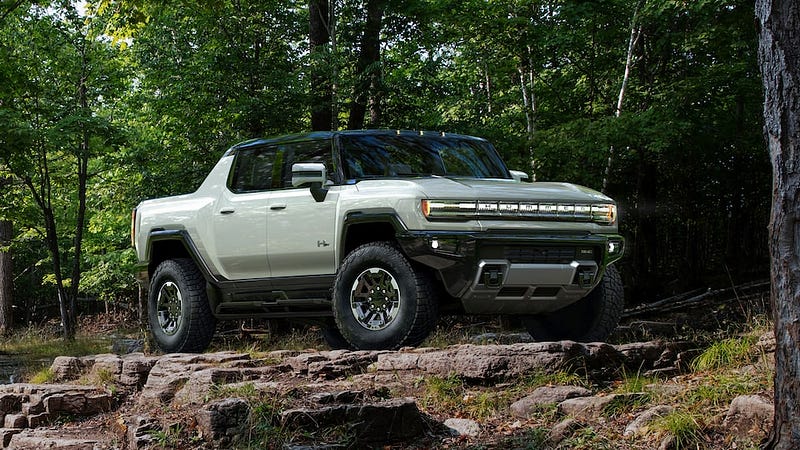Why Electric Vehicles Struggle to Gain Traction in the US Market
Written on
Chapter 1: Introduction to Electric Vehicles in America
Electric vehicles (EVs) are often hailed as the future of transportation, yet their viability in the United States remains questionable. The American preference for larger vehicles poses significant obstacles for the widespread adoption of EVs. While these vehicles may suit some drivers, there are numerous reasons they have yet to align with American driving habits and infrastructure.
Section 1.1: Challenges of Size and Efficiency
One major issue is that larger vehicles necessitate more energy to operate, leading to decreased efficiency for EVs. It's well-known that EVs typically have shorter ranges compared to traditional gasoline vehicles, a challenge that becomes more pronounced with larger models. This limitation renders EVs less practical for American consumers who favor larger vehicles. Notably, in 2020, the three best-selling vehicles in the US were all pickup trucks.
Subsection 1.1.1: The Impact of Long Distances
The vast expanses of American roads and highways further complicate the situation for EVs. The United States is characterized by extensive highways and lengthy commutes, making road trips a common pastime. Consequently, EV drivers must stop to recharge their cars more frequently, which can prolong travel times and disrupt planned schedules.

Section 1.2: Underdeveloped Charging Infrastructure
Moreover, the current charging infrastructure in the US remains insufficient. Although electric charging stations are becoming increasingly available, they are still far outnumbered by traditional gas stations. This scarcity can make it challenging for EV drivers, especially those traveling outside urban areas, to find convenient charging options. Additionally, the time it takes to charge an EV far exceeds that of refueling a gasoline vehicle, making it a less attractive option for those pressed for time.
Chapter 2: The Environmental and Economic Impacts
Larger EVs face longer charging times due to their hefty battery requirements. For instance, charging a Hummer EV can take nearly a week using a standard 120-volt outlet, whereas a Tesla Model Y may take about two days. Ironically, the increased battery size can also make these vehicles less environmentally friendly, as they contain more lithium and metals, the extraction of which is harmful to the planet.
This video, "Americans Refuse to Buy EV's… Why?" delves into the reasons behind the reluctance of American consumers to adopt electric vehicles.
Another aspect to consider is the higher initial cost associated with EVs. Although prices are gradually decreasing, they still tend to be more expensive than gas-powered alternatives. While some drivers are willing to invest in a vehicle that is more environmentally conscious, this higher price point remains a significant barrier for many.
Furthermore, the lack of comprehensive government incentives for EV purchases in the US exacerbates the issue. While certain states offer incentives, there is no overarching national program to encourage electric vehicle adoption, unlike in countries such as Norway and the Netherlands that provide substantial benefits to EV buyers.
The video titled "America Hates Electric Vehicles - Why Is That?" explores the cultural and economic factors contributing to the reluctance toward EV adoption in the US.
Chapter 3: A Comparison with Europe
It's worth noting that not all EVs in the US qualify for a $7,500 tax credit, as their MSRP must be below $80,000. Additionally, many EVs that do qualify are significantly heavier than those available in Europe.
In stark contrast, Europe's infrastructure is more conducive to electric vehicles. The continent features narrower roads, shorter commutes, and a greater reliance on public transport, making EVs a more practical choice for many European drivers. Moreover, European nations have heavily invested in charging infrastructure, facilitating easier access for EV users.
In summary, while electric vehicles may serve the needs of some American drivers, they are not yet tailored to fit the unique driving habits and infrastructure of the US. Until improvements are made in both technology and infrastructure, it’s unlikely that EVs will become a mainstream option for American consumers. However, as advancements continue and charging facilities become more prevalent, a gradual shift toward electric vehicles may occur in the future. Despite this, the American preference for larger vehicles is unlikely to change rapidly.